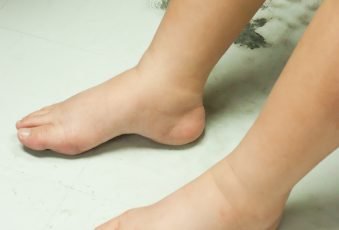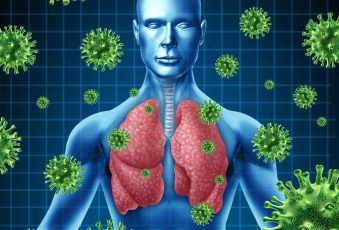- Home
- Lymphatic Drainage
LYMPHATIC DRAINAGE
What Is Lymphatic Drainage?
Types Of Lymphatic System
Lymph Vessels: Carry the lymph fluid, the lymph fluid ferries toxins
and waste products to the liver and kidneys, where they are then
safely disposed of by the body.
Lymph Nodes: This network of vessels connects to lymph nodes in
the neck, armpits, stomach and groin which act as a filter, trapping
or destroying toxins that predispose us to health problems.
Lymphatic Organs: produce immune cells to fight against infections
Why having a paper cut on your finger might lead to an armpit lump?
The lymphatic system is a sub-system between the circulatory and immune systems. It could be called the body’s’ ‘plumbing’ system. The lymphatic system has four main functions:
- maintaining the balance of fluid between the blood and tissues, known as fluid homeostasis.
- forming part of the body’s immune system and helps defend against bacteria and other intruders.
- facilitating the absorption of fats and fat-soluble nutrients in the digestive system
- Helps get rid of toxins and waste products
What Happens If My Lymphtaic System Is Clogged?

Loss of proteins
About 25-50% of blood proteins leak out of the capillaries each day and they cannot get back into capillaries without the help of the lymphatic system.

Fluid retention or edema
Your arms, legs, hands and ankles will be swollen and in some cases the face giving you that puffy face

Infection
A poor functioning lymphatic system could be the reason why you’re sick.
Diseases Associated With The Lymphatic System
Lymphedema
- A chronic swelling in one arm or leg caused by too much lymph fluid. Lymph nodes act like a drain in your sink.
- If the drain is clogged, the fluid cannot drain. It usually happens in the arms or legs, but can occur in other parts of the body.
- Lymph fluid is part of the lymph system that carries fluid and cells that help fight infections throughout the body.
- Sometimes this swelling develops quickly, or it may develop slowly over several months. Many people develop this disorder following cancer therapy.
Lymphadenopathy
- It is a condition where the lymph nodes become swollen or enlarged which can be secondary to bacterial, viral, or fungal infections, autoimmune disease, and malignancy.
- Lymphatic fluid moves throughout the lymphatic system, transitioning from the organs to lymphoid capillaries, lymphatic vessels, and finally lymph nodes for foreign antigen filtration.
- Foreign substances are presented to the lymphoid cells, which lead to cellular proliferation (duplication) and enlargement.
- As lymphatic capsules stretch due to increased activity, patients may experience pain on the area.
Lymphoma
- Hodgkin's lymphoma
- Non-Hodgkin's lymphoma
- Painless swelling of lymph nodes in your neck, armpits or groin
- Persistent fatigue
- Fever
- Night sweats
- Shortness of breath
- Unexplained weight loss
- Itchy skin
Splenomegaly lymphatic disease
- Your spleen is an organ that sits just below your left rib cage. Splenomegaly is a condition that occurs when your spleen becomes enlarged. It’s also commonly referred to as enlarged spleen or spleen enlargement.
- It usually caused by a viral infection) that causes the spleen to swell to several times its normal size.
- The spleen is a part of your lymphatic system. It helps the immune system by storing white blood cells and helping in the creation of antibodies.
- Pain or fullness in the left upper belly that can spread to the left shoulder
- A feeling of fullness without eating or after eating a small amount because the spleen is pressing on your stomach
- Low red blood cells (anemia)
- Frequent infections
- Bleeding easily
Castleman
- Unicentric Castleman disease (UCD) affects one group of lymph nodes, often in your chest or belly. It's the most common kind. Surgery to remove those lymph nodes usually cures it.
- multicentric Castleman disease (MCD). It affects many lymph nodes. Because it's so widespread, doctors can't remove all of the affected nodes the way they can with UCD.
Why Do You need A Lymphatic Drainage Massage?
- Increasing the lymph capillary uptake, which means increasing the uptake of fluid between the cells into the lymphatic system.
- It has soothing, relaxing and pain-relieving effects
- It helps to redirect fluid from blocked areas into healthy lymph vessels
- lymphatic drainage massage will help facilitate the movement of your lymphatic system
- Increasing the lymph-angio activity, which means that the gentle skin- stretch massage strokes results in stimulation of the lymphatic vessels just underneath the surface of the skin in order to the fluid flow.
How Does It Work?
Phase 1: Health Assessment
Meeting the therapist to find out more about
your condition
Our health practitioner will then plan with your individual need to tackle all your problems and to avoid any contraindications.
Your practitioner may have you do simple deep breathing exercises prior to your massage to stimulate your lymphatic system and prepare your lymph nodes to bring in more fluid.
Phase 2: Detoxification
- Manual Lymphatic Drainage
- Vacuum Lymphatic Drainage
- Thermal Lymphatic Drainage
- LED Therapy Lymphatic Drainage
Phase 3: Maintenance
After Procedure
Your therapist will advice you to rest for a bit before heading home after your massage.
There will be frequent urinations and bowel movements. That is okay. This way, body toxins and wastes will be flushed out and then you will finally get rid with all those harmful elements that cause diseases and other illnesses. Also, although it is really tempting to eat a lot, you have to mind what and how much you eat.
Eat healthy foods and limit your intake with all those fatty and greasy favorite of yours because most of the times these are the culprits of the sufferings experienced by your own body.
Testimonials
What Our Customers Love About us





